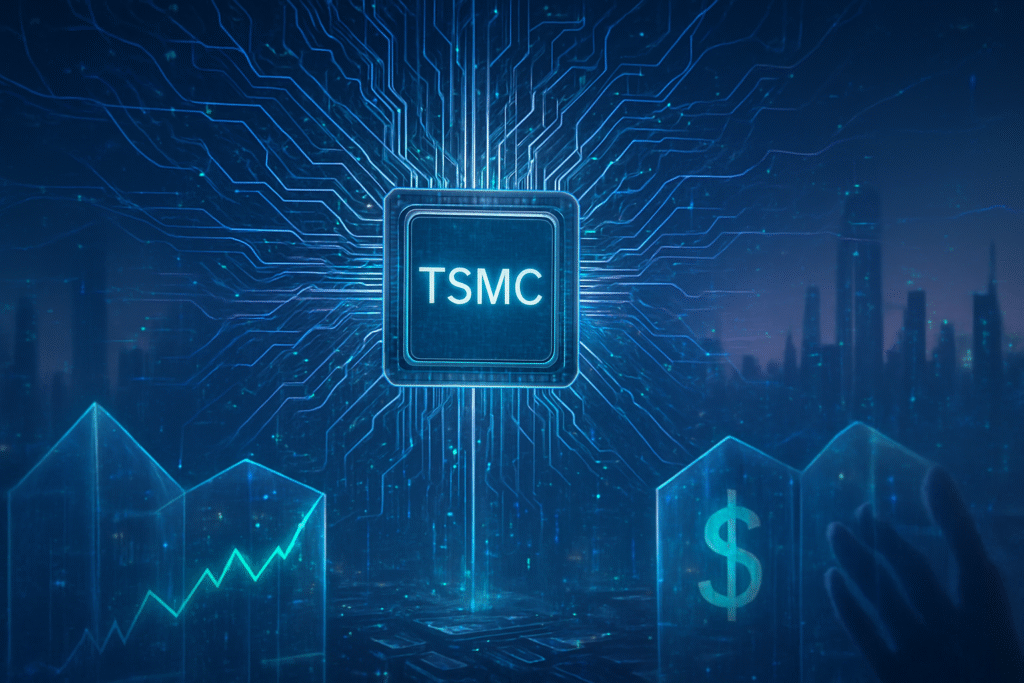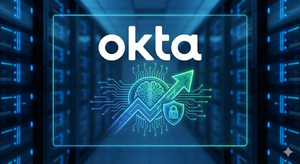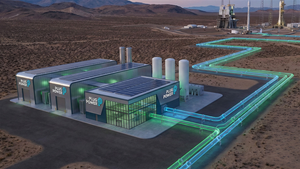
The artificial intelligence revolution is fueling an unprecedented surge in demand for advanced semiconductors, propelling the global chip market towards a projected trillion-dollar valuation by 2030. At the heart of this "silicon supercycle" lies Taiwan Semiconductor Manufacturing Company (TSMC) (NYSE: TSM), the undisputed leader in foundry services, whose cutting-edge fabrication capabilities are indispensable for the AI chips powering everything from data centers to generative AI models. However, for institutional fund managers, this concentrated reliance on TSMC presents a complex dilemma: how to capitalize on the explosive growth of AI semiconductors while navigating inherent investment limitations and significant geopolitical risks.
This high-stakes environment forces fund managers to walk a tightrope, balancing the immense opportunities presented by AI's insatiable hunger for processing power with the very real challenges of portfolio overexposure and supply chain vulnerabilities. As the market cap of AI chip giants like Nvidia (NASDAQ: NVDA) dwarfs competitors, the pressure to invest in these critical enablers intensifies, even as strategic considerations around concentration and geopolitical stability necessitate careful, often self-imposed, investment caps on cornerstone companies like TSMC. The immediate significance for institutional investors is a heightened need for sophisticated risk management, strategic capital allocation, and a relentless search for diversification beyond the immediate AI darlings.
The Indispensable Foundry and the AI Silicon Supercycle
The insatiable demand for artificial intelligence is driving a profound transformation in the semiconductor industry, marked by a "silicon supercycle" that differs significantly from previous tech booms. This current surge is underpinned by the complex computational requirements of modern AI applications, particularly large language models (LLMs), generative AI, and advanced data center infrastructure. AI accelerators, including Graphics Processing Units (GPUs), Tensor Processing Units (TPUs), and Neural Processing Units (NPUs), are at the forefront of this demand. These specialized chips excel at parallel processing, a critical capability for machine learning algorithms, and often feature unique memory architectures like High-Bandwidth Memory (HBM) for ultra-fast data transfer. Their design prioritizes reduced precision arithmetic and energy efficiency, crucial for scaling AI operations.
At the epicenter of this technological revolution is Taiwan Semiconductor Manufacturing Company (TSMC) (NYSE: TSM), an indispensable foundry whose technological leadership is unmatched. TSMC commands an estimated 70% of the global pure-play wafer foundry market, with its dominance in advanced process nodes (e.g., 3nm, 2nm) exceeding 90%. This means that roughly 90% of the world's most advanced semiconductors for high-performance computing (HPC) and AI are fabricated by TSMC. Major AI innovators like Nvidia (NASDAQ: NVDA), Apple (NASDAQ: AAPL), AMD (NASDAQ: AMD), Amazon (NASDAQ: AMZN), and Google (NASDAQ: GOOGL) are heavily reliant on TSMC for their cutting-edge AI chip designs. Beyond traditional manufacturing, TSMC's advanced packaging technologies, notably CoWoS (Chip-on-Wafer-on-Substrate), are pivotal. CoWoS integrates logic dies with HBM stacks, providing the ultra-fast data transmission and enhanced integration density required for AI supercomputing, with TSMC planning to triple its CoWoS production capacity by 2025.
For fund managers, navigating this landscape is complicated by various investment limitations, often termed "stock caps." These are not always formal regulatory mandates but can be self-imposed or driven by broader diversification requirements. Regulatory frameworks like UCITS rules in Europe typically limit single-stock exposure to 10% of a fund's assets, while general portfolio diversification principles suggest limiting any individual holding to 10-20%. Sector-specific limits are also common. These caps are designed to manage portfolio risk, prevent over-reliance on a single asset, and ensure compliance. Consequently, even if a stock like TSMC or Nvidia demonstrates exceptional performance and strong fundamentals, fund managers might be compelled to underweight it relative to its market capitalization due to these concentration rules. This can restrict their ability to fully capitalize on growth but also mitigates potential downside risk.
The current AI semiconductor boom stands in stark contrast to the dot-com bubble of the late 1990s. While that era was characterized by speculative hype, overpromising headlines, and valuations disconnected from revenue, today's AI surge is rooted in tangible real-world impact and established business models. Companies like Microsoft (NASDAQ: MSFT), Google, and Amazon are leading the charge, integrating AI into their core offerings and generating substantial revenue from APIs, subscriptions, and enterprise solutions. The demand for AI chips is driven by fundamental technological shifts and underlying earnings growth, rather than purely speculative future potential. While optimism is high, the financial community also exhibits a healthy degree of caution, with ongoing debates about a potential "AI bubble" and advice for selective investment. The tech community, meanwhile, emphasizes the continuous need for innovation in chip architecture and memory to keep pace with the exponentially growing computational demands of AI.
Corporate Chessboard: Navigating Scarcity and Strategic Advantage
The AI-driven semiconductor market, characterized by unprecedented demand and the bottleneck of advanced manufacturing capabilities, is profoundly reshaping the competitive landscape for AI companies, tech giants, and startups. This environment creates a corporate chessboard where strategic moves in chip design, supply chain management, and capital allocation determine who thrives.
Tech giants, including Alphabet (NASDAQ: GOOGL), Amazon (NASDAQ: AMZN), Microsoft (NASDAQ: MSFT), and Meta (NASDAQ: META), are generally better positioned to navigate this high-stakes game. Their robust balance sheets and diversified portfolios enable them to absorb higher hardware costs and invest heavily in internal chip design capabilities. These companies are often priority customers for foundries like TSMC, securing crucial allocations of advanced chips. Many are actively developing custom AI silicon—such as Google's TPUs, Amazon's Trainium/Inferentia chips, and Apple's (NASDAQ: AAPL) neural engines—to reduce reliance on third-party vendors, optimize performance for specific AI workloads, and gain significant cost advantages. This trend towards vertical integration is a major competitive differentiator, with custom chips projected to capture over 40% of the AI chip market by 2030.
Conversely, AI companies and startups, while brimming with innovation, face a more challenging environment. The soaring costs and potential supply chain constraints for advanced chips can create significant barriers to entry and scalability. Without the negotiating power or capital of tech giants, startups often encounter higher prices, longer lead times, and limited access to the most advanced silicon, which can slow their development cycles and create substantial financial hurdles. Some are adapting by optimizing their AI models for less powerful or older-generation chips, or by focusing on software-only solutions that can run on a wider range of hardware, though this can impact performance and market differentiation.
The "TSMC stock caps," referring to the foundry's production capacity limitations, particularly for advanced packaging technologies like CoWoS, are a critical bottleneck. Despite TSMC's aggressive expansion plans to quadruple CoWoS output by late 2025, demand continues to outstrip supply, leading to higher prices and a relationship-driven market where long-term, high-margin customers receive priority. This scarcity intensifies the scramble for supply among tech giants and encourages them to diversify their foundry partners, potentially creating opportunities for competitors like Intel Foundry Services (NASDAQ: INTC) and Samsung Foundry (KRX: 005930). Companies like Nvidia (NASDAQ: NVDA), with its dominant GPU market share and proprietary CUDA software platform, continue to be primary beneficiaries, creating high switching costs for customers and reinforcing its market leadership. AMD (NASDAQ: AMD) is making significant inroads with its MI300X chip, positioning itself as a full-stack rival, while memory suppliers like SK Hynix (KRX: 000660), Samsung Electronics, and Micron Technology (NASDAQ: MU) are seeing surging demand for High-Bandwidth Memory (HBM). The overarching competitive implication is a rapid acceleration towards vertical integration, diversified sourcing, and relentless innovation in chip architecture and packaging to secure a strategic advantage in the AI era. This intense competition and supply chain strain also risk disrupting existing products and services across various industries, leading to increased costs, delayed AI project deployments, and potentially slower innovation across the board if not addressed strategically.
A Geopolitical Chessboard and the New Industrial Revolution
The AI-driven semiconductor market is far more than a mere component supplier; it is the indispensable architect shaping the trajectory of artificial intelligence itself, with profound wider significance for the global economy, geopolitics, and technological advancement. This market is experiencing explosive growth, with AI chips alone projected to reach US$400 billion in sales by 2027, driven by the insatiable demand for processing power across all AI applications.
This boom fits squarely into the broader AI landscape as the fundamental enabler of advanced AI. From the training of massive generative AI models like Google's Gemini and OpenAI's Sora to the deployment of sophisticated edge AI in autonomous vehicles and IoT devices, specialized semiconductors provide the speed, energy efficiency, and computational muscle required. This symbiotic relationship creates a "virtuous cycle of innovation": AI fuels advancements in chip design and manufacturing, and better chips, in turn, unlock more sophisticated AI capabilities. This era stands apart from previous AI milestones, such as the early AI of the 1950s-80s or even the deep learning era of the 2010s, by the sheer scale and complexity of the models and the absolute reliance on high-performance, specialized hardware.
TSMC's (NYSE: TSM) indispensable role as the "unseen architect" of this ecosystem, manufacturing over 90% of the world's most advanced chips, places it at the nexus of intense geopolitical competition. The concentration of its cutting-edge fabrication facilities in Taiwan, merely 110 miles from mainland China, creates a critical "chokepoint" in the global supply chain. This geographic vulnerability means that geopolitical tensions in the Taiwan Strait could have catastrophic global economic and technological consequences, impacting everything from smartphones to national defense systems. The "chip war" between the U.S. and China, characterized by export controls and retaliatory measures, further underscores the strategic importance of these chips, compelling nations to seek greater technological sovereignty and diversify supply chains.
Beyond geopolitics, significant concerns arise from the economic concentration within the AI semiconductor industry. While the boom generates substantial profits, these gains are largely concentrated among a handful of dominant players, reinforcing the market power of companies like Nvidia (NASDAQ: NVDA) and TSMC. This creates barriers to entry for smaller firms and can lead to economic disparities. Furthermore, the immense energy consumption of AI training and large data centers, coupled with the resource-intensive nature of semiconductor manufacturing, raises serious environmental sustainability concerns. The rapid advancement of AI, enabled by these chips, also brings societal implications related to data privacy, algorithmic bias, and potential job displacement, demanding careful ethical consideration and proactive policy development. The long-term trend points towards pushing beyond Moore's Law with advanced packaging, exploring neuromorphic and quantum computing, and a relentless focus on energy efficiency, with AI itself becoming a co-creator in designing the next generation of semiconductors.
The Road Ahead: Innovation, Specialization, and Strategic Adaptation
The AI-driven semiconductor market is poised for continued explosive growth and transformative evolution, promising a future defined by ever-more sophisticated AI capabilities. In the near term, the focus remains on specialized chip architectures: advancements in Neural Processing Units (NPUs) for consumer devices, custom Application-Specific Integrated Circuits (ASICs) for dedicated AI tasks, and relentless innovation in Graphics Processing Units (GPUs) and Tensor Processing Units (TPUs) for high-performance computing. Critically, the demand for High-Bandwidth Memory (HBM) and advanced packaging technologies will intensify, as they are crucial for overcoming performance bottlenecks and enhancing energy efficiency. The push for AI at the edge, bringing processing closer to data sources, will also drive demand for low-power, high-performance chips in everything from smartphones to industrial sensors.
Looking further ahead, long-term developments will venture into more revolutionary territory. Breakthroughs in on-chip optical communication using silicon photonics, novel power delivery methods, and advanced liquid cooling systems for massive GPU server clusters are on the horizon. Experts predict the semiconductor industry could reach a staggering $1.3 trillion by 2030, with generative AI alone contributing an additional $300 billion. The industry is also actively exploring neuromorphic designs, chips that mimic the human brain's structure and function, promising unprecedented efficiency for AI workloads. Continuous miniaturization to 3nm and beyond, coupled with AI-driven automation of chip design and manufacturing, will be pivotal in sustaining this growth trajectory.
These advancements will unlock a vast array of new applications and use cases. In consumer electronics, AI-powered chips will enable real-time language translation, personalized health monitoring, and more intuitive device interactions. The automotive sector will see further leaps in Advanced Driver-Assistance Systems (ADAS) and fully autonomous vehicles, driven by AI semiconductors' ability for real-time decision-making. Data centers and cloud computing will continue to be foundational, processing the immense data volumes required by machine learning and generative AI. Edge computing will proliferate, enabling critical real-time decisions in industrial automation, smart infrastructure, and IoT devices. Healthcare will benefit from AI in diagnostics, personalized medicine, and advanced robotics, while telecommunications will leverage AI for enhanced 5G network management and predictive maintenance.
However, this future is not without its challenges. The escalating costs of innovation, particularly for designing and manufacturing chips at smaller process nodes, create significant financial barriers. The increasing complexity of chip designs demands continuous advancements in automation and error detection. Power consumption and energy efficiency remain critical concerns, as large AI models require immense computational power, leading to high energy consumption and heat generation. Geopolitical tensions and supply chain constraints, as highlighted by the TSMC situation, will continue to drive efforts towards diversifying manufacturing footprints globally. Furthermore, talent shortages in this highly specialized field could hinder market expansion, and the environmental impact of resource-intensive chip production and AI operations will require sustainable solutions.
For fund managers, navigating this dynamic landscape requires a nuanced and adaptive strategy. Experts advise focusing on key enablers and differentiated players within the AI infrastructure, such as leading GPU manufacturers (e.g., Nvidia (NASDAQ: NVDA)), advanced foundry services (e.g., TSMC (NYSE: TSM)), and suppliers of critical components like HBM. A long-term vision is paramount, as the market, despite its strong growth trends, is prone to cyclical fluctuations and potential "bumpy rides." Diversification beyond pure-play AI chips to include companies benefiting from the broader AI ecosystem (e.g., cooling solutions, power delivery, manufacturing equipment) can mitigate concentration risk. Fund managers must also monitor geopolitical and policy shifts, such as the U.S. CHIPS Act, which directly impact capital allocation and supply chain resilience. Finally, a cautious approach to valuations, focusing on companies with clear monetization pathways and sustainable business models, will be crucial to distinguish genuine growth from speculative hype in this rapidly evolving market.
The Silicon Bedrock: A Future Forged in AI Chips
The AI-driven semiconductor market stands as a pivotal force, reshaping the global technological and economic landscape with both unparalleled opportunities and significant challenges. At its core, this transformation is fueled by the insatiable demand for advanced computing power required by artificial intelligence, particularly generative AI and large language models. Taiwan Semiconductor Manufacturing Company (TSMC) (NYSE: TSM) remains an indispensable titan, underpinning the entire ecosystem with its cutting-edge manufacturing capabilities.
Key Takeaways: The current era is defined by an "AI Supercycle," a symbiotic relationship where AI drives demand for increasingly sophisticated chips, and semiconductor advancements, in turn, unlock more powerful AI capabilities. Foundries like TSMC are not merely suppliers but fundamental global infrastructure pillars, with their manufacturing prowess dictating the pace of AI innovation. This necessitates massive capital investments across the industry to expand manufacturing capacity, driven by the relentless demand from hyperscale data centers and other AI applications. Consequently, semiconductors have ascended to a central role in global economics and national security, making geopolitical stability and supply chain resilience paramount.
Significance in AI History: The developments in AI semiconductors represent a monumental milestone in AI history, akin to the invention of the transistor or the integrated circuit. They have enabled the exponential growth in data processing capabilities, extending the spirit of Moore's Law, and laying the foundation for transformative AI innovations. The unique aspect of this era is that AI itself is now actively shaping the very hardware foundation upon which its future capabilities will be built, creating a self-reinforcing loop of innovation that promises to redefine computing.
Long-Term Impact: The long-term impact of AI on the semiconductor market is projected to be profoundly transformative. The industry is poised for sustained growth, fostering greater efficiency, innovation, and strategic planning. AI's contribution to global economic output is forecasted to be substantial, leading to a world where computing is more powerful, efficient, and inherently intelligent. AI will be embedded at every level of the hardware stack, permeating every facet of human life. The trend towards custom AI chips could also decentralize market power, fostering a more diverse and specialized ecosystem.
What to Watch For in the Coming Weeks and Months: Investors and industry observers should closely monitor TSMC's progress in expanding its production capacity, particularly for advanced nodes and CoWoS packaging, as major clients like Nvidia (NASDAQ: NVDA) continue to request increased chip supplies. Announcements regarding new AI chip architectures and innovations from major players and emerging startups will signal the next wave of technological advancement. Global trade policies, especially those impacting U.S.-China semiconductor relations, will remain a critical factor, as they can reshape supply chains and market dynamics. Continued strategic investments by tech giants and semiconductor leaders in R&D and manufacturing will indicate confidence in long-term AI growth. Finally, market sentiment regarding AI stock valuations and any further indications of market corrections, particularly in light of TSMC's recent slowdown in monthly revenue growth, will be crucial. The pursuit of energy-efficient chip designs and sustainable manufacturing practices will also gain increasing prominence, driven by growing environmental concerns.
The future of AI and, indeed, much of the digital world, will continue to be forged in silicon. The dynamic interplay between AI demand and semiconductor innovation will undoubtedly remain a dominant theme for the foreseeable future, demanding vigilance and strategic foresight from all participants.
This content is intended for informational purposes only and represents analysis of current AI developments.
TokenRing AI delivers enterprise-grade solutions for multi-agent AI workflow orchestration, AI-powered development tools, and seamless remote collaboration platforms.
For more information, visit https://www.tokenring.ai/.





